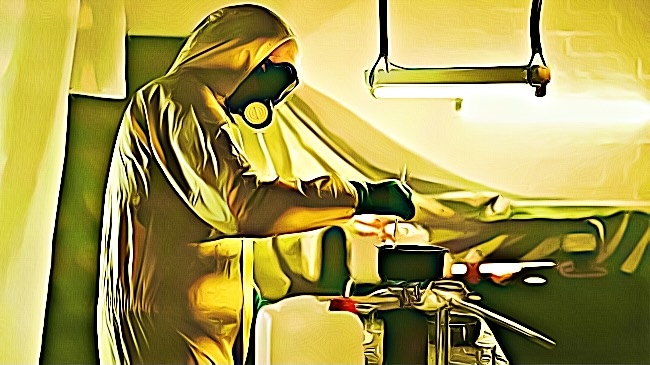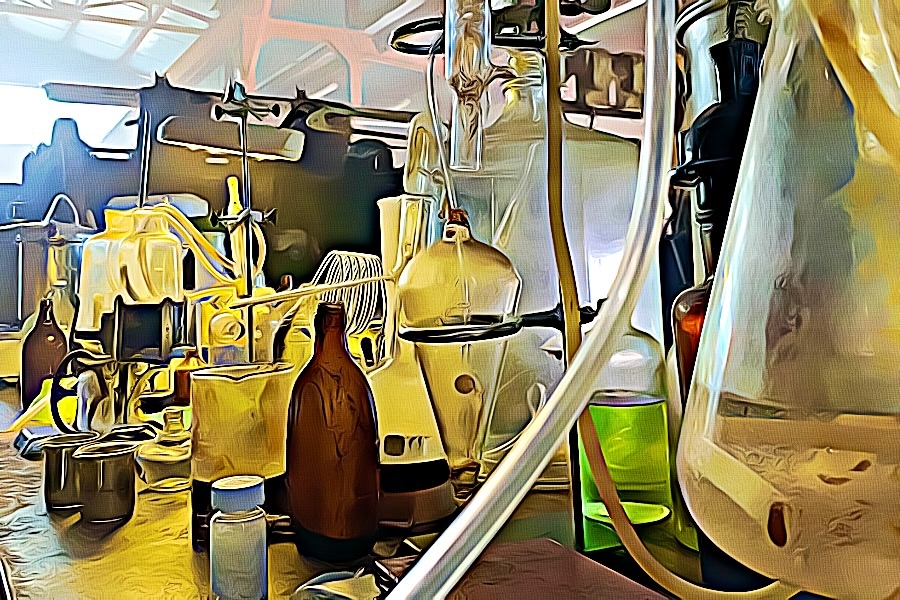How Can You Tell If a House is a Former Meth Lab?
Buying and owning a house is every responsible adult’s dream, especially if they want to settle down and start a family. Imagine the kind of nightmare you’ll go through when you find out that the house you’ve invested in is actually a former meth house. A property inspector may be able to easily spot the signs of meth production, but you can help as well. You can follow these tips to help you determine if your home was a former meth lab.
Signs of a Former Meth Lab
The best way to tell if your home has been a former meth lab is to hire an environmental investigator or a property inspector. A property inspector may be able to detect some of the signs of meth, but here are some signs that anyone can easily spot.
Sign #1: The Strong Odor of Ammonia
Ammonia is a common ingredient in the production of meth. The odor of ammonia is very distinct and may be so strong that you will be able to smell it even outside of your home. If a neighbor complains about the smell, it can also signify that a meth lab was in your home.
The smell of ammonia will stick around for a long time, and you may smell it even after more than a year after the meth lab has been shut down.
Cleaners and disinfectants may mask the smell of ammonia, but the smell may still be faintly there, or it will eventually come back. You can also identify the smell of ammonia by the yellow stains that can appear on the flooring and carpets.
The smell of ammonia is not the only sign that a former meth lab may have in your home. You may also notice different kinds of chemicals in your home or your neighborhood. These chemicals may have been used in meth production.
Sign #2: White Powdery Residue on Walls and Countertops
If you see white powdery residue anywhere in your home, chances are that it was used to make meth. White powdery residue can be found on countertops, tables, floors, and even on the ceiling.
Those white powdery residues are known as d-methamphetamine or desoxyephedrine and are common ingredients in the production of meth. They may be easily mistaken for spilled talcum powder, but talcum powder does not usually stick to walls, tables, or cabinets. The best way to determine if the white powder is meth residue is to compare it to the smell of ammonia.
Sign #3: Chemical Pots
If you find chemical pots in your home, they may be used to make meth. Chemical pots are typically found in a kitchen or bathroom near the sink. The chemical pots are used to mix and store the ingredients used in the meth production.
Chemical pots will appear clean and shiny and may look like they haven’t been used at all, but you can easily tell if they were used for cooking meth. You can easily recognize a chemical pot because it will appear scratched and have a black coating, just like a cast-iron pot.
An ordinary pot or kettle, on the other hand, will not have any sign of being used for cooking chemicals.
Sign #4: Silver Connections and Tubes
The silver tubes and the silver connections that you may see around your home are commonly used in a meth lab. These tubes and connections are used to transport the chemicals from one point to another.
If you find silver tubes and pipes in your home, your house may have been used as a meth lab. A property inspector should be able to easily spot the silver tubes, but if you want to do it yourself, you can check for the white powdery residue, presence of chemical pots, and strong ammonia odor.
Sign #5: Presence of Acetone
Acetone is one of the common ingredients used in making meth and is found in chemical pots. Acetone is a colorless liquid with the smell of nail polish remover. It is a very flammable substance and can cause headaches, nausea, and even death.
Acetone is not used for cooking and can easily be identified by the strong odor of nail polish remover. If you smell nail polish remover in your home, there is a possibility that your home was a former meth lab.
Sign #6: Presence of Coleman Fuel
The presence of Coleman fuel can also be a sign of a former meth lab. Coleman fuel, also known as white gas, is a common ingredient used in the production of meth. The fuel can cause severe skin irritation and may even be fatal if inhaled.
The fuel is also flammable and, if inhaled, may cause contact burns if the fumes touch the skin. It is also very toxic and can cause damage to the nervous system, liver, and kidneys and can even lead to birth defects if a pregnant woman were to come in contact with Coleman fuel.
Sign #7: Check the Database
The Drug Enforcement Agency (DEA) has a database of former meth labs that can help you identify a former meth lab. All you have to do is enter the address into the database, and you will be able to find out if the house was used as a meth lab.
Even if your home was not used, you could check it to see if your neighbor’s home is a former meth lab.

What is Meth, and How is it Made?
Before we look at the signs of a meth house, we must first understand how meth is made and what kind of equipment and setup is needed to make it.
Meth or Methamphetamine is a highly addictive stimulant drug that is also known by its many street names such as speed, ice, crank, and crystal. Â Meth is very dangerous and can lead to liver damage, severe weight loss, and lead the user to experience psychotic and violent hallucinations.
Meth is commonly made using common household items such as Coleman fuel and Drano, but the chemicals involved in the cooking and the resulting fumes are toxic and harmful. These fumes can permeate the walls, caulking, and flooring in a house where meth is made. The space where meth is made is known as a meth lab, and a meth lab can be in someone’s home, a warehouse, or a trailer.
Typically, a meth operation would involve the use of quite common household ingredients such as over-the-counter antihistamines, acetone, camp stove fuel, lithium from batteries, ephedrine, iodine, and other common household chemicals.
The process itself of cooking meth is very dangerous and carries the risk of explosion and chemical burns, and even the end product is toxic, which is why meth labs are so hazardous to the environment and people around them.
The signs of a meth house will vary depending on how the house was used. Even a house that has been used as a meth lab may pass a routine inspection, so you will have to know how to look for the signs of meth in order to spot it.
Meth Labs and the Clandestine Operation
Meth labs can be very dangerous, especially if they are not properly equipped with the proper ventilation and a proper fire suppression system. Homeowners may not even know that a meth lab was in their home or that it was there before.
There are different kinds of meth labs, one of which is a clandestine operation that can be easily disguised. A clandestine operation may be an apartment or a condo in an apartment building, or it can be a private home.
The property where a clandestine meth lab was kept is usually in disarray, and there may be trash and syringes in the vicinity. The clandestine lab must be kept secret and is usually hidden, so it would be easy for you to miss the signs, especially if you don’t know what to look for.
Conclusion
The best way to tell if your home is a former meth lab is to call in an environmental investigator or property inspector who has extensive training in detecting meth labs and knows what to look for.

